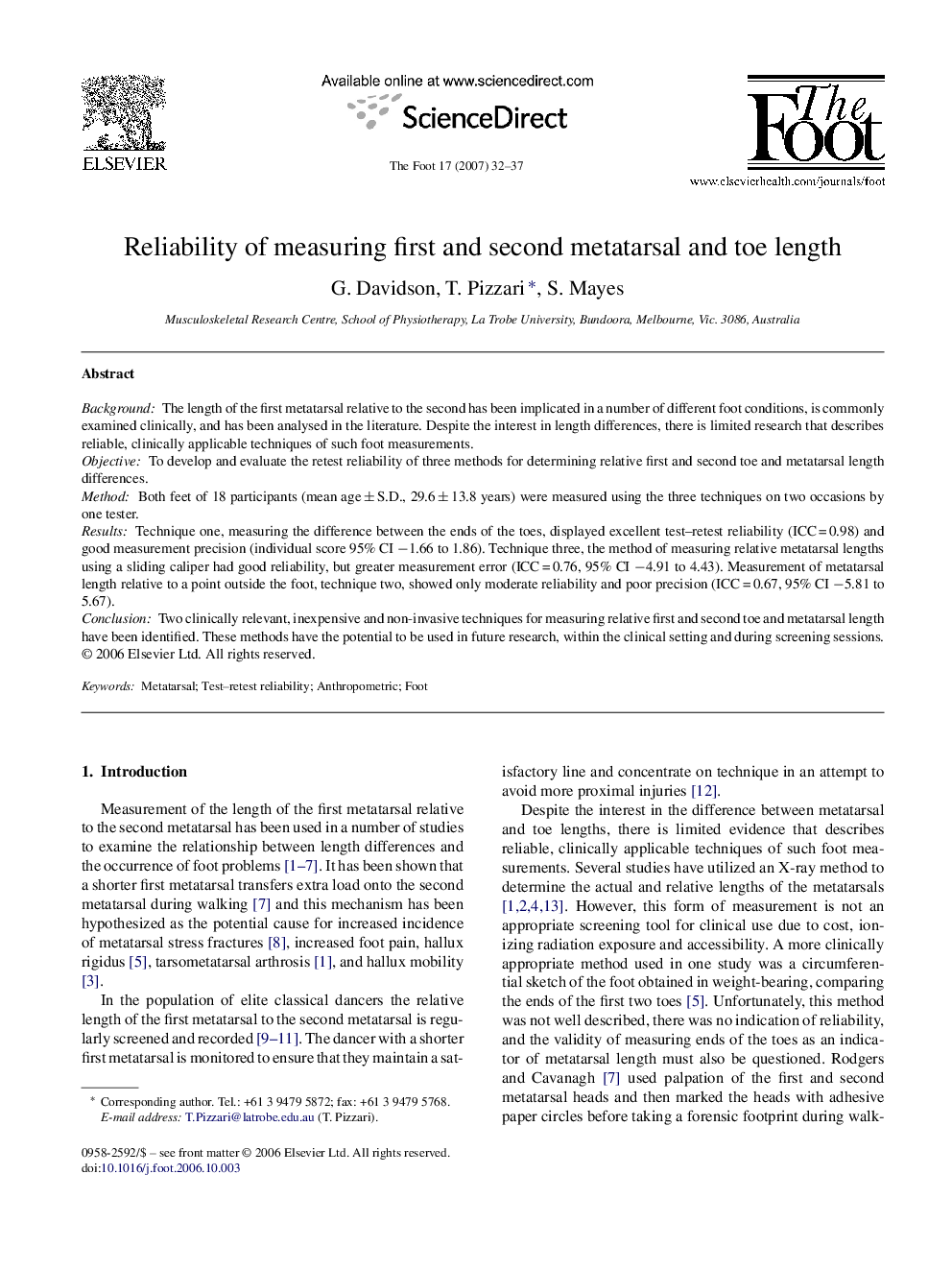| Article ID | Journal | Published Year | Pages | File Type |
|---|---|---|---|---|
| 2713635 | The Foot | 2007 | 6 Pages |
BackgroundThe length of the first metatarsal relative to the second has been implicated in a number of different foot conditions, is commonly examined clinically, and has been analysed in the literature. Despite the interest in length differences, there is limited research that describes reliable, clinically applicable techniques of such foot measurements.ObjectiveTo develop and evaluate the retest reliability of three methods for determining relative first and second toe and metatarsal length differences.MethodBoth feet of 18 participants (mean age ± S.D., 29.6 ± 13.8 years) were measured using the three techniques on two occasions by one tester.ResultsTechnique one, measuring the difference between the ends of the toes, displayed excellent test–retest reliability (ICC = 0.98) and good measurement precision (individual score 95% CI −1.66 to 1.86). Technique three, the method of measuring relative metatarsal lengths using a sliding caliper had good reliability, but greater measurement error (ICC = 0.76, 95% CI −4.91 to 4.43). Measurement of metatarsal length relative to a point outside the foot, technique two, showed only moderate reliability and poor precision (ICC = 0.67, 95% CI −5.81 to 5.67).ConclusionTwo clinically relevant, inexpensive and non-invasive techniques for measuring relative first and second toe and metatarsal length have been identified. These methods have the potential to be used in future research, within the clinical setting and during screening sessions.
